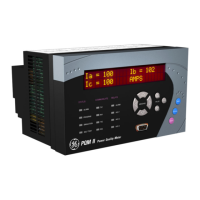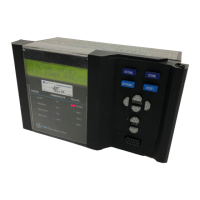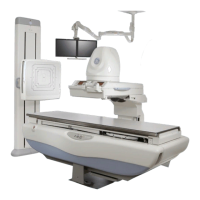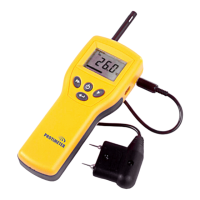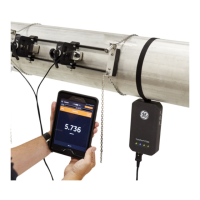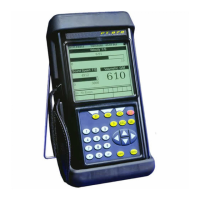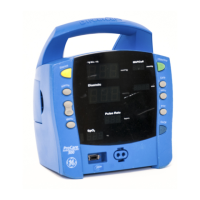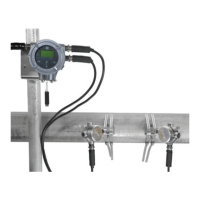5. Making Conventional Measurements
PHASOR XS Operating Manual Page 67
5.2.1 Setting Angle Beam Probe
Characteristics
To configure the instrument for an angle-beam probe,
follow this procedure
Step 1: Activate the TRIG Submenu located in the EVAL
menu.
Step 2: Select the PROBE ANGLE function and input the
angle for the probe you’ve installed. Surface evaluation
is performed by installing the correct probe/wedge and
setting this value above 89 degrees.
Step 3: Select the THICKNESS function and input the
thickness of the test piece. Note that the thickness of a
solid rod is input as ONE-HALF of its diameter (which
means that the THICKNESS value will equal one-half of
the O DIAMETER value).
Step 4: Select the X VALUE function and input the user-
determined X value for the probe. When desired, this
compensates for the distance from the BIP to the front of
the probe’s wedge.
Step 5: Select the O DIAMETER function and input a
curved test piece’s outside diameter (from 50 to 2000
mm). When set to FLAT, curvature correction is not
applied.
NOTE: Based on the values input for the TRIG func-
tions (PROBE ANGLE, THICKNESS, X VALUE, and
O DIAMETER), the instrument operates in one of five
modes. Each of these modes are represented by an
icon in the ICON BAR located near the screen’s upper
left corner. See
Figure 4-6 for interpretation of these
icons.
5.2.2 Indicating Leg with Color
The leg in which a reflector is encountered, as identi-
fied in
Figure 5-4, can be visually indicated on the
instrument display using color. Setting the COLOR LEG
function (located in the EVAL MODE submenu of the
EVAL Menu) to ON will cause each ultrasonic time region
to be displayed in a unique color.
5.3 Displaying Measured Results
The instrument is capable of displaying up to six
measured readings at one time. The displayed read-
ings are selected using the RESULTS Submenu
located in the EVAL Menu. Parameters available for
display include the following (availability depends on
instrument configuration and operating mode):
• A%A—Amplitude (as a % of full-screen height) of
the highest echo falling within the width of A-Gate
• A%B—Amplitude (as a % of full-screen height) of
the highest echo falling within the width of B-Gate
Note that when S, D, P, or R readings are displayed,
the Gate-Detection Mode (5.1.2) setting for the refer-
enced gate (A or B) is indicated by a ^ (Peak Mode)
or a / (Flank Mode).
• SA—Sound-Path distance or duration represented
by the highest echo to cross A-Gate
• SB—Sound-Path distance or duration represented
by the highest echo to cross B-Gate
• SBA—Sound-Path distance or duration from the
highest echo in A-Gate to the echo in B-Gate. Read-
ing is only available if B-Gate and A-Gate are on.
• DA—Material-thickness depth from the test-
piece surface (the probe-contacted side) to the
reflector represented by the echo in A-Gate. (see
Figure 5-4)
• DB—Material-thickness depth from the test-piece
surface (the probe-contacted side) to the reflector
represented by the echo in B-Gate. (see
Figure 5-4)
• LA—Leg number of the reflector represented by the
echo in A-Gate. (see
Figure 5-4)
• LB—Leg number of the reflector represented by the
echo in B-Gate. (see
Figure 5-4)
• PA—Projection distance from the probe’s BIP to the
reflector represented by the echo in A-Gate. (see
Figure 5-4)
• PB—Projection distance from the probe’s BIP to the
reflector represented by the echo in B-Gate. (see
Figure 5-4)
• RA—Projection distance from the probe’s BIP to the
reflector represented by the echo in A-Gate, minus
the inputted X-VALUE. (see
Figure 5-4)
• RB—Projection distance from the probe’s BIP to the
reflector represented by the echo in B-Gate, minus
the inputted X-VALUE. (see
Figure 5-4)
• A%rA—Amplitude of the signal crossing the A-Gate
as a percentage of the active EVAL MODE’s refer-
ence amplitude.
• dBrA—dB equivalent height difference between the
signal crossing A-Gate and the active EVAL MODE’s
reference height.
• A%rB—Amplitude of the signal crossing the B-Gate
as a percentage of the active EVAL MODE’s refer-
ence amplitude (see below).
• dBrB—dB equivalent height difference between
the signal crossing B-Gate and the active EVAL
MODE’s reference height (see below).
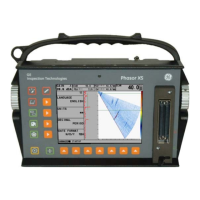
